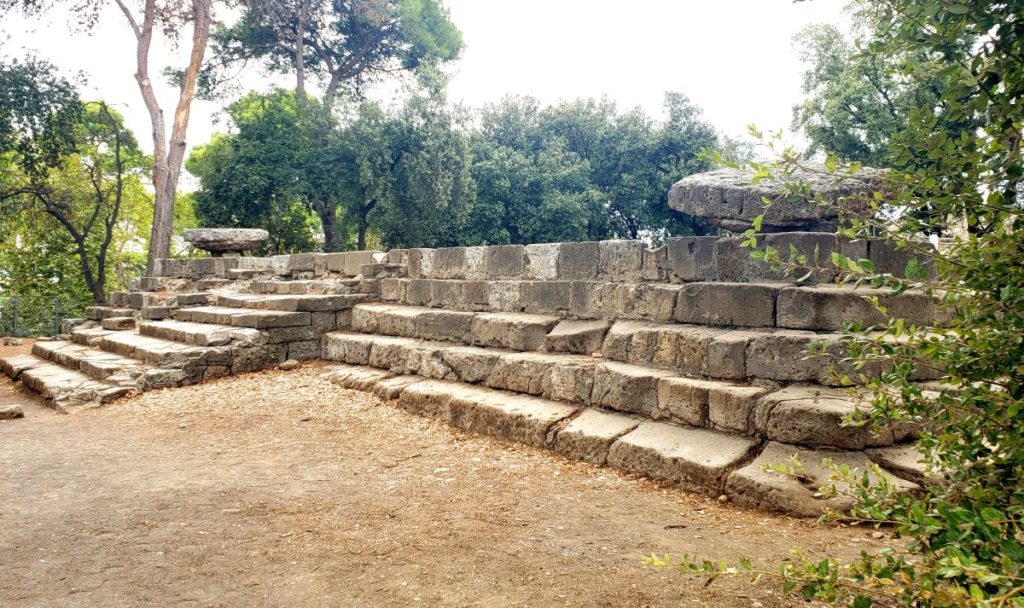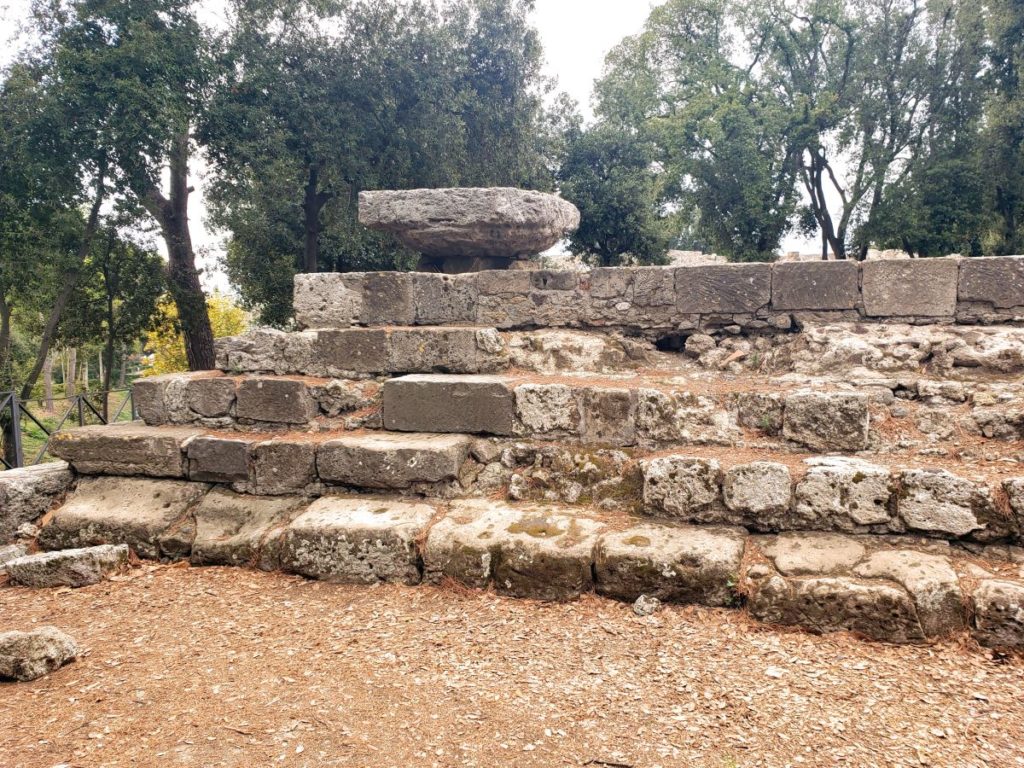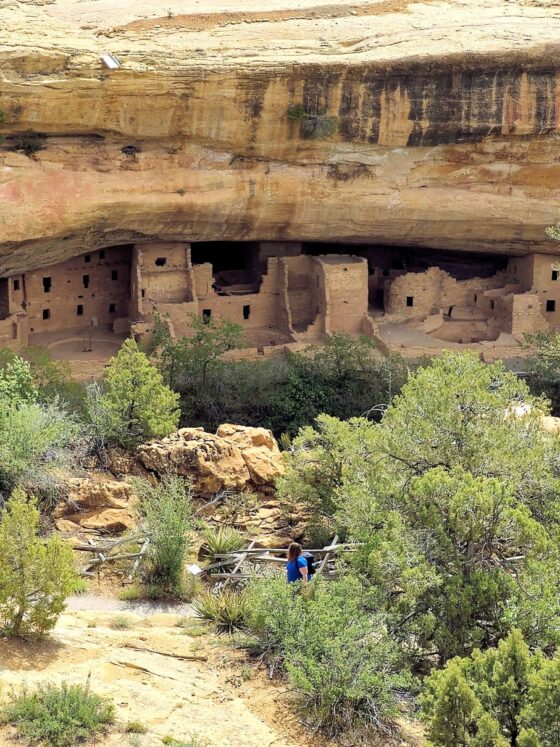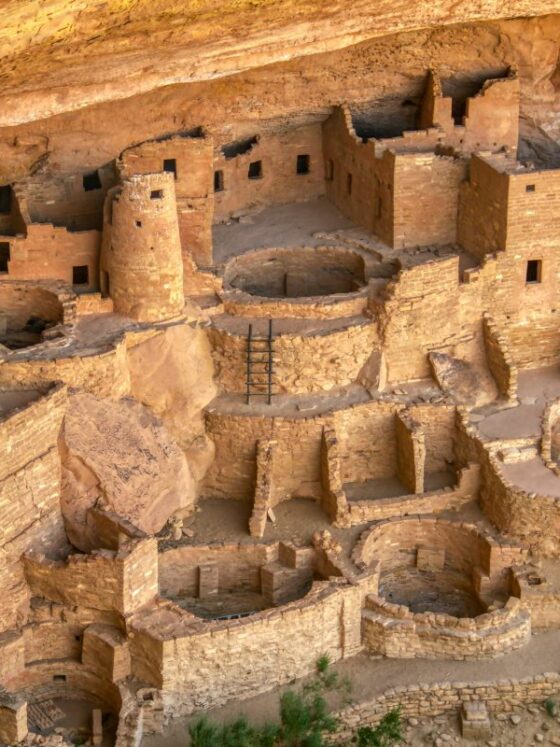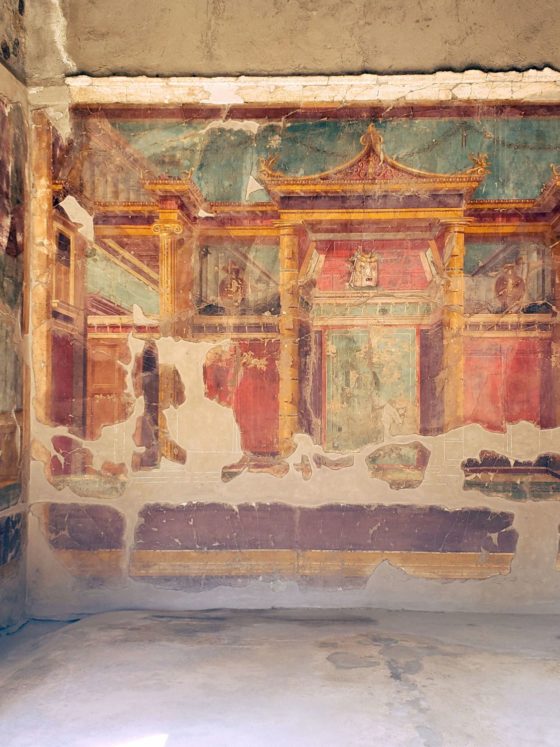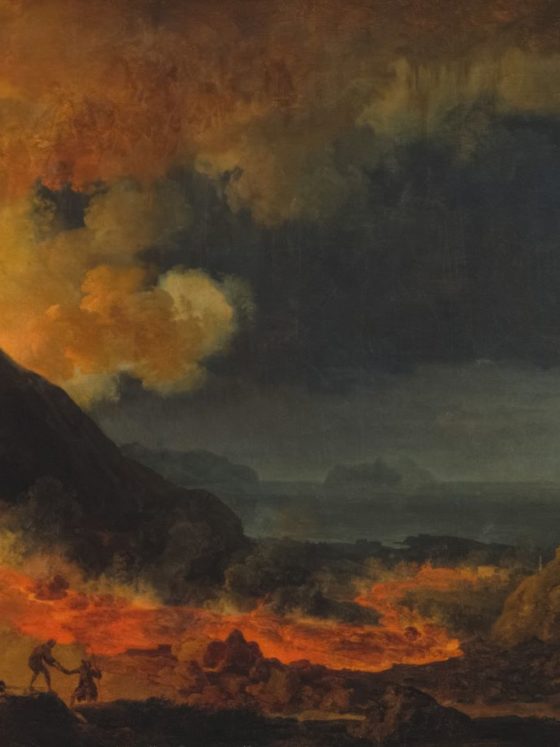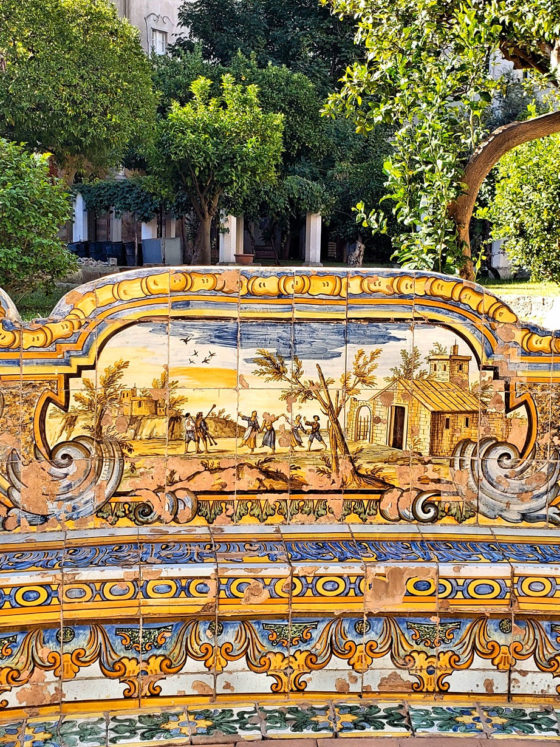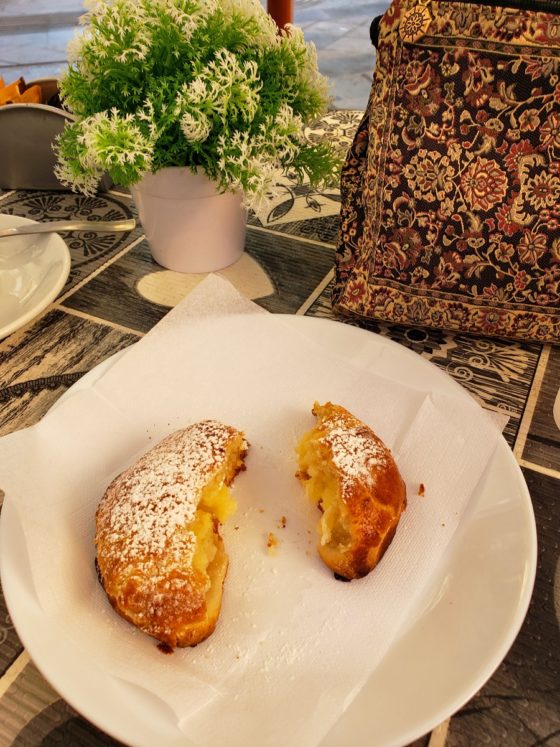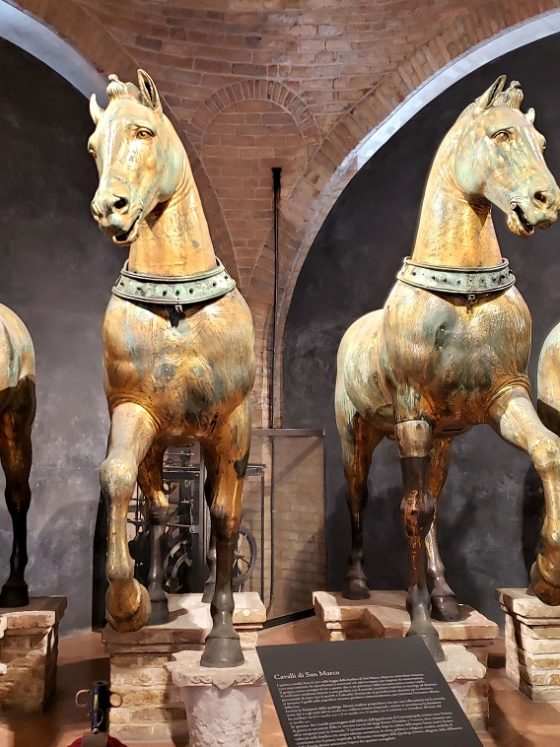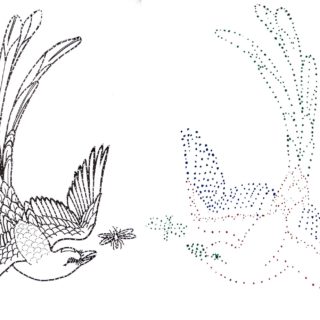Pompeii’s destruction with the eruption of Vesuvius in AD 79 froze the ancient city in time preserving its history for us today. We can visit its shops and homes, its theaters and temples, and as we walk the same ancient streets and learn Pompeii’s story we can in our minds recreate the lives of those that lived there
Useful information for visiting Pompeii:
1 . The archeological park of Pompeii’s official website is located at: pompeiisites.org
It is here you’ll find the most up to date and accurate information on visiting hours along with notifications about closures as well as download their official, free guidebook.
2 . Make sure to check out the list of buildings currently open to the public and their own individual visiting hours or days. As some of the excavations at Pompeii have rotating access and their own hours.

3 . Make sure you don’t miss the newest excavations open to the public or The House of the Vettii, which has re-opened after nearly twenty years of being closed for restoration.
4 . It bears mentioning, there may or may not be any physical maps available at the ticket offices. You may very well be expected to access the map from the website or through the park’s MyPompeii App. Just keep in mind the battery life of your phone if you’re planning on accessing the official guidebook on it, as well as using it to access the map, as well as using it as a camera, especially if you’re planning on spending most of the day there exploring and you’ll still need your phone to check the time and train schedule back to your hotel.
5 . Other interesting and potentially useful websites:
~ Pompeiiinpictures.com ~ a really great site that’s exactly what the name implies, a vast photo collection of every region in Pompeii.
~ artsandculture.google.com ~ Google’s Arts & Culture website has virtual tours of museums and cultural heritage sites around the world, including the Naples Archeological Museum and Pompeii. On this website one can virtually walk through Pompeii’s streets and the museum housing most of it’s artifacts, pretty cool : )
~ ancientgraffitiproject.org ~ on online database of ancient graffiti found at Pompeii and Herculaneum. The graffiti is categorized by location and type and often has accompanying translations and photos.
6. You may also want to check out my other blog posts: Pompeii vs Herculaneum: The Most Frequently Asked Questions, & Pompeii Was Not Alone: Other Sites Uncovered Around Vesuvius.
7 . My last tip, check out the Great Courses on Wondrium and watch some of the lecture series on Pompeii. The course titled Pompeii: Daily life in an ancient Roman city, is an interesting and fun way to prepare for a visit.
~Walking the Ancient Streets~


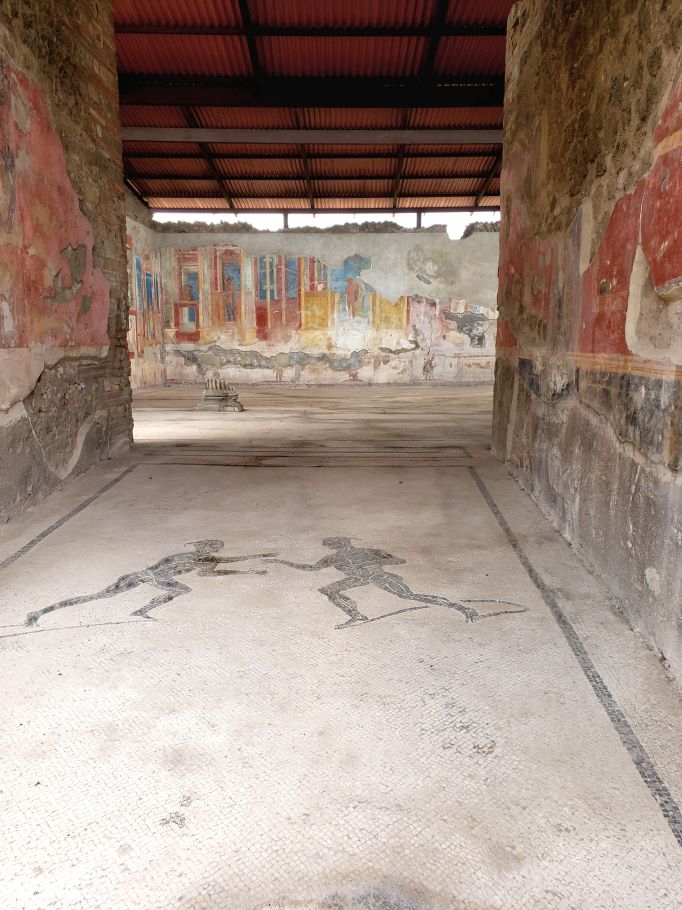
There are three modern day ticketed entrances to the Pompeii site; Porta Marina, Piazza Esedra, and Piazza Anfiteatro. If arriving by the circumvesuviana train, the Porta Marina entrance is the one just opposite the Pompeii Scavi Station, it was also one of the original seven gates into ancient Pompeii.

The road out through the Porta Marina gate led to the sea and possibly to a harbor before the coastline was extended far out to its present position or so one prevailing story goes. Digging deeper however one discovers different versions to the story because apparently we don’t actually know where the harbor was located. Ancient Pompeii was not as close to the sea as Herculaneum was, it was not even as close as many tourists are led to believe, as the so-called boat mooring rings that many guides will point out as the place where boats were tied up, located adjacent to the Porta Marina gate would have, according to soil studies, even back then been approximately 33 feet above sea level.
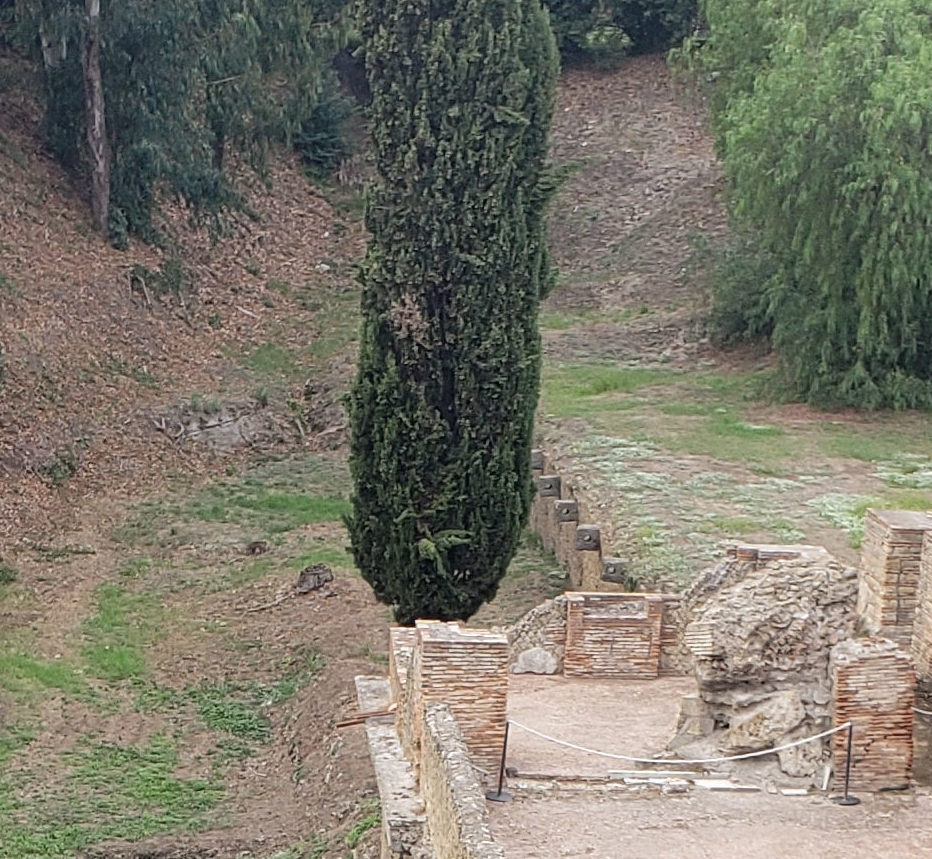
Even though Pompeii was well known as a port city it’s location not just along the coast but also at the mouth of the Sarno River has led some to believe the harbor would most likely have been a river harbor and would have been located closer to the mouth of the Sarno, which at that time was navigable and would have been an important means for conducting inland trade. The website Romanports.org has an article that does a great job consolidating all the research about Pompeii’s harbor to date. It’s fairly short and has a lot of engaging information, if the topic interests you, I’d recommend checking it out.
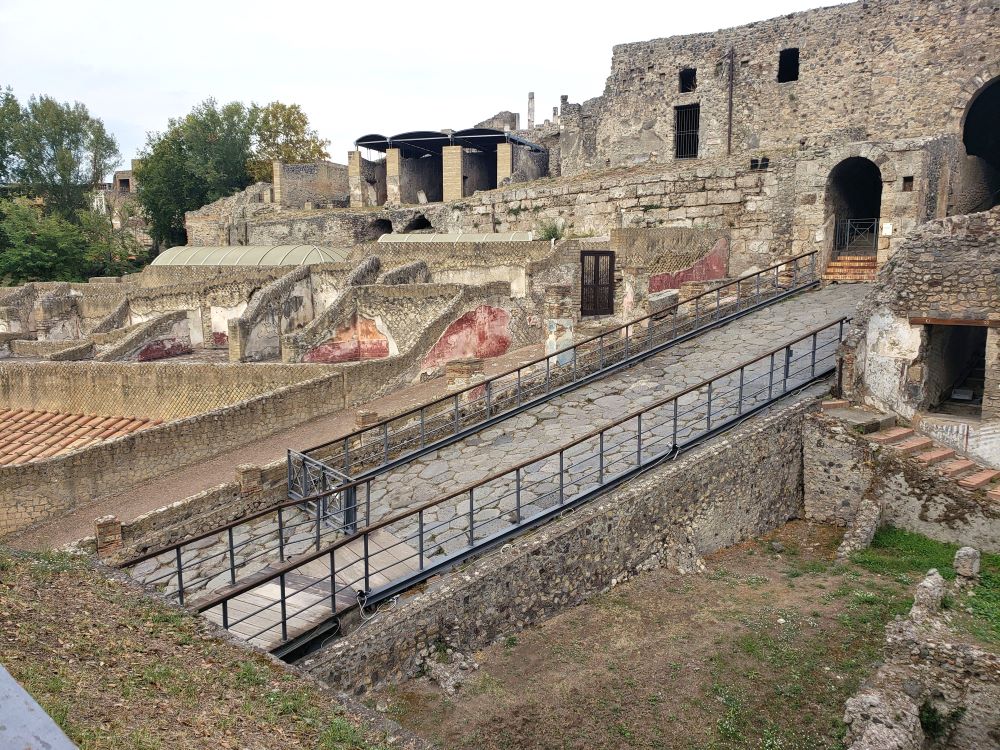
After passing inside the Porta Marina gate, Pompeii’s ancient Via Marina road leads straight to the Forum, a large open space surrounded by public buildings; it was the center of administrative activity and of both civil and religious public life. Approaching the Forum from this direction one will first encounter the Temple of Apollo on the left and Pompeii’s Basilica on the right.
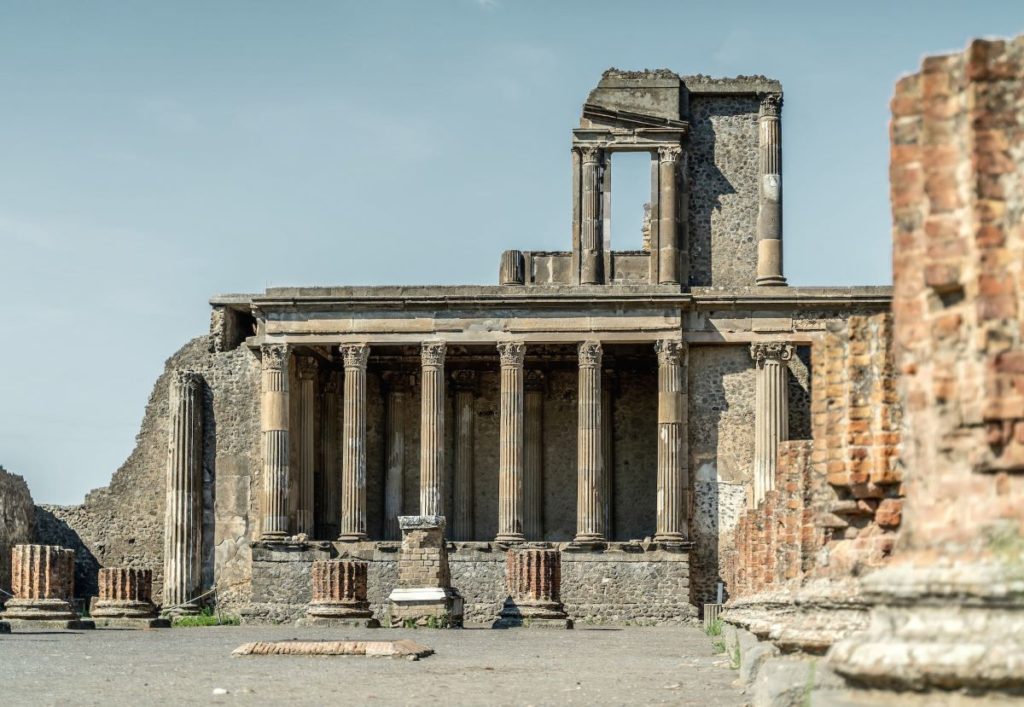
The Basilica was a hall over 100 feet long lined with columns and it had a high platform, called a tribunal at one end on which judges sat to hear cases.

At the north end of the Forum stands the Temple of Jupiter flanked with arches on both sides. It is through these arches behind the Temple of Jupiter that one will find the park’s modern day cafe.

The cafe has an assortment of refreshments, mostly baked goods and bottled drinks. While I was there they also had pre-made panini (sandwiches) which they would warm up using a grill. Both the selection and quality of the cafe were basic, certainly good enough for restoring one’s fortitude, but not much better.
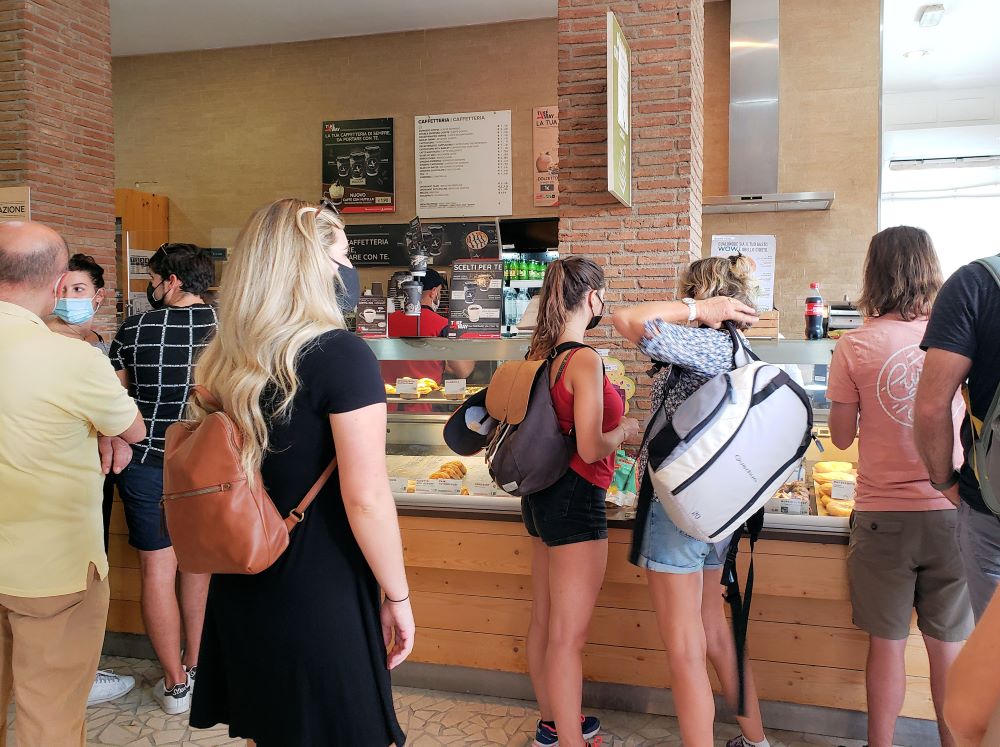
If entering the Archeological Park from the opposite side, the east side, through the modern day Piazza Antifeato ticket entrance one of the first things one will encounter is Pompeii’s ancient amphitheater. It is apparently the oldest known Roman amphitheater, erected around 70 or 80 BC.
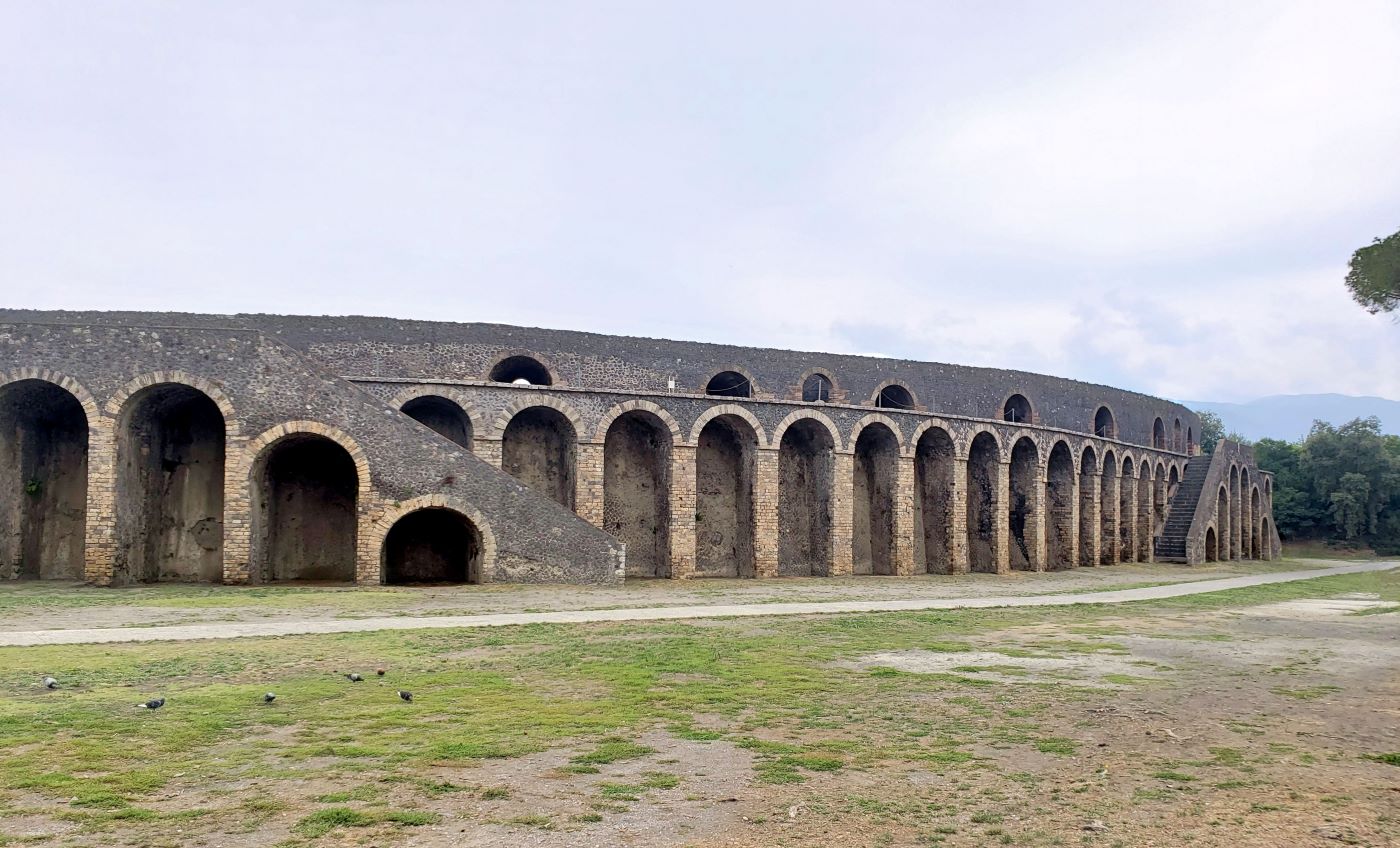
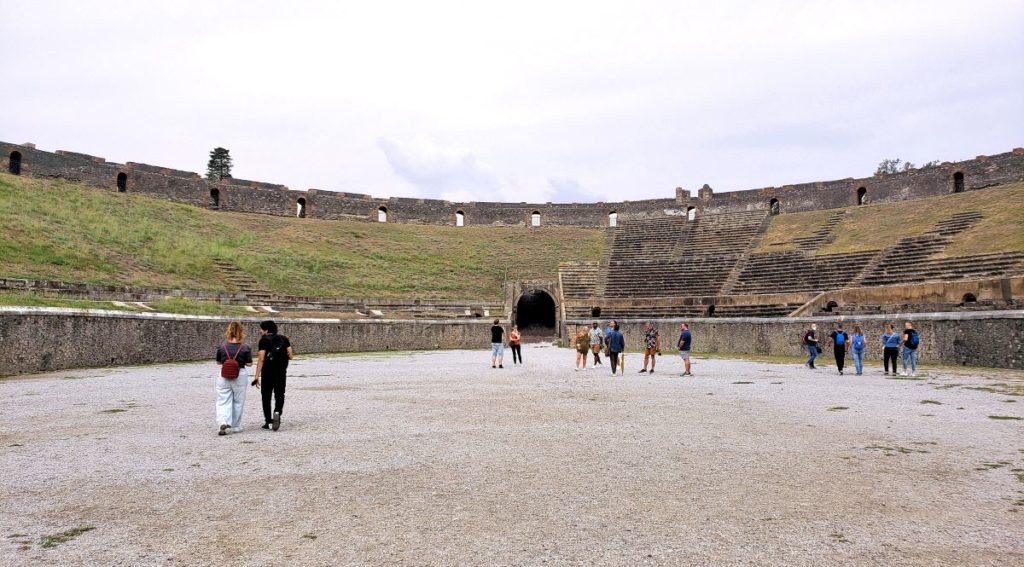
Other Sites of Interest at Pompeii:
Semi-Circular Theaters:
Aside from the ‘theater in the round’ Pompeii has two more actual (or semi-circular) theaters. The smaller theater referred to as an Odeon had a permanent roof and (with a capacity of around 1000) it was intended for more intimate performances. There was also a larger open air theater which could seat up to 5000 people.
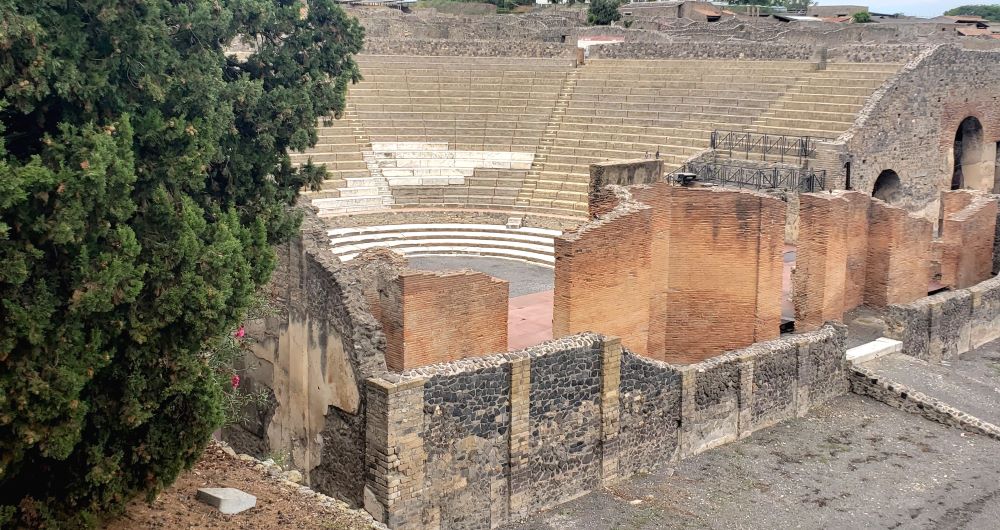
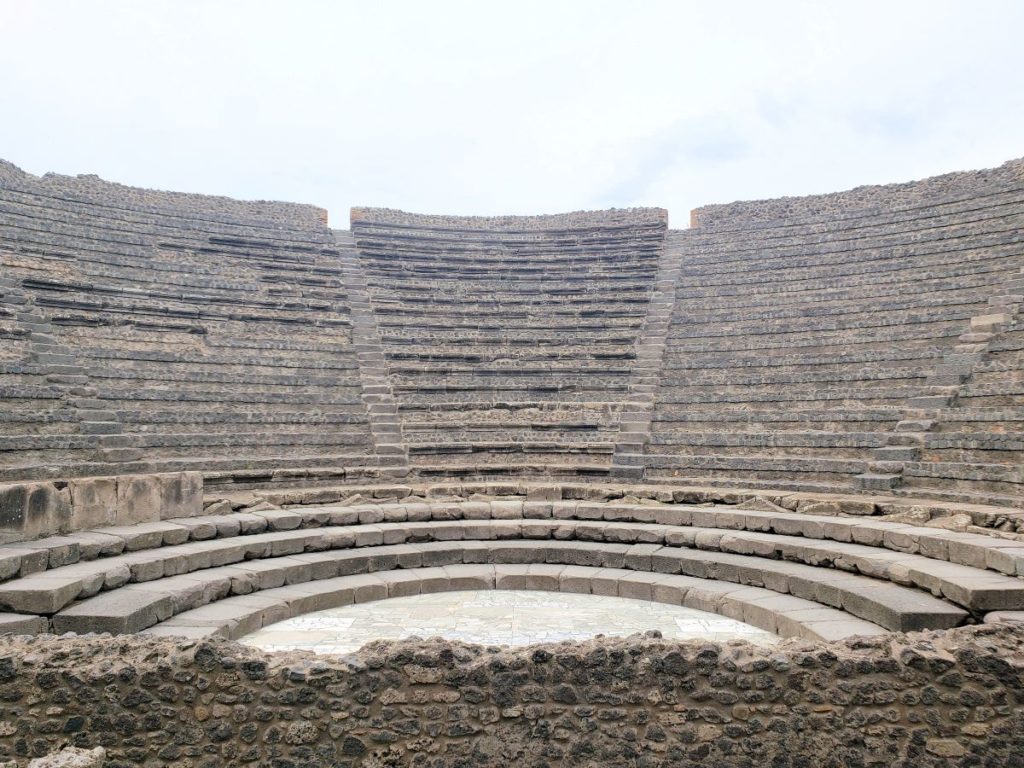
Shops, Bakeries & Laundromats:
Small “fast food” shops called Thermopolias abounded throughout old Pompeii. Indeed one of the newest excavations open to the public is a thermopolia (located in Pompeii’s Region V).
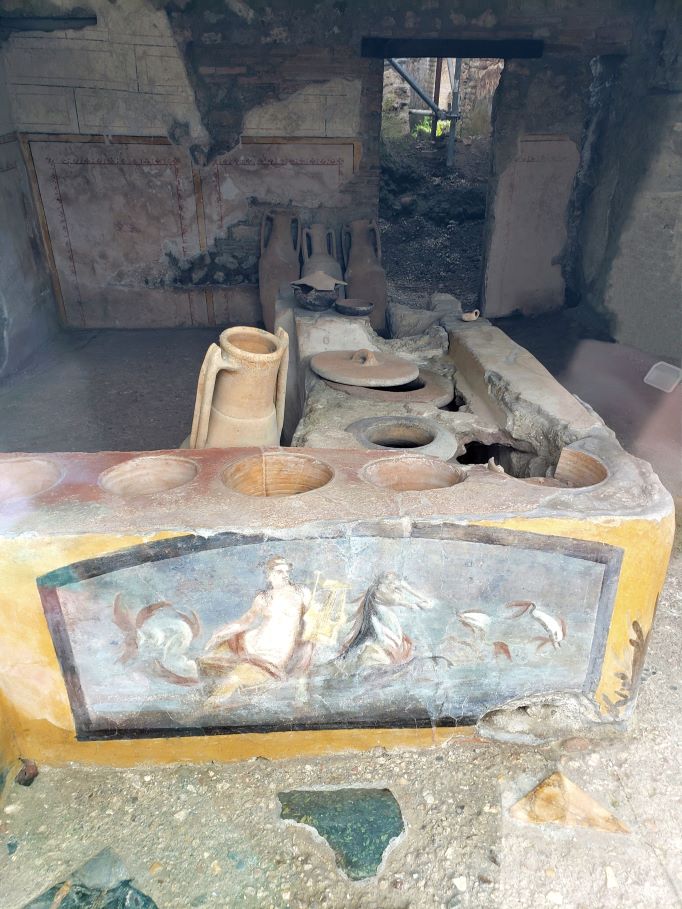
There were also bakeries and fulleries. Bakeries at Pompeii not only had large ovens for baking, but most also had their own mills for grinding grain into flour. Fulleries in ancient Pompeii were places used to process wool into cloth and they were also where people took their clothes to be washed. As you may already know (it’s definitely not something you forget once you’ve heard it) the ancient Romans used urine aka pee to clean their clothes. I understand they didn’t have soap and urine has ammonia in it, a strong cleaning agent… still.. I don’t know. I guess that’s why most people didn’t wash their own clothes.. lol.
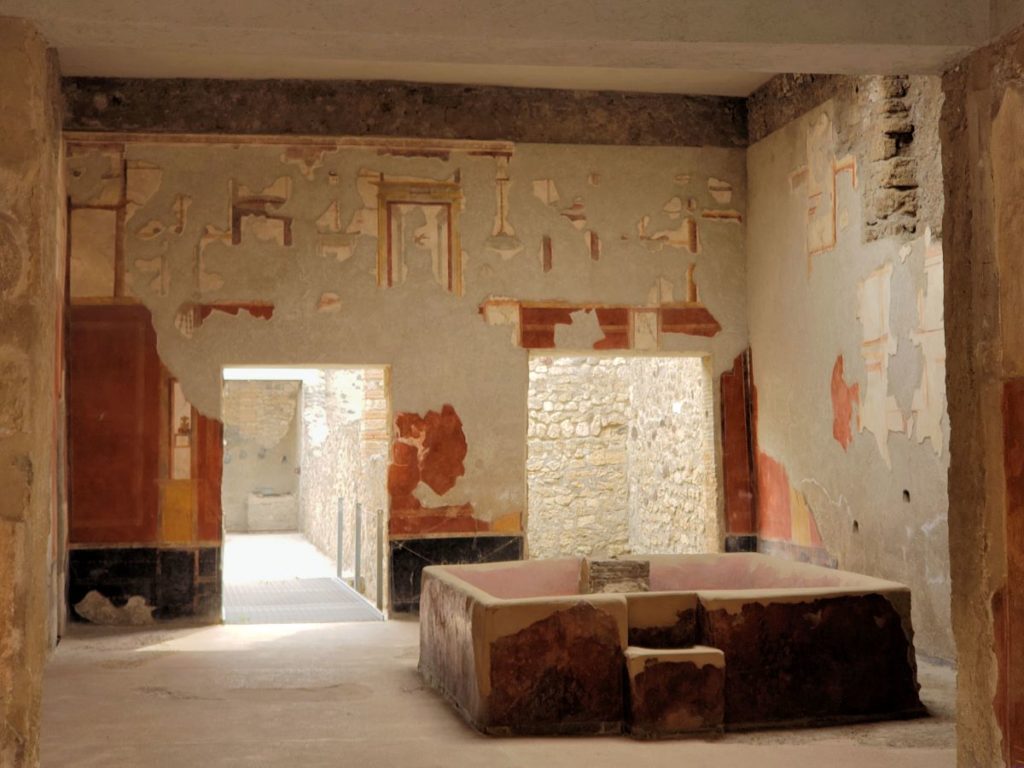
Miscellaneous Architectural Details:


Houses & Villas:
Probably more than anything else Pompeii consisted of houses. There were small houses behind shop fronts, these shops might have been run by the families living there or rented out, and there were much larger houses, some so large they took up entire blocks. The following were a few of my favorites:
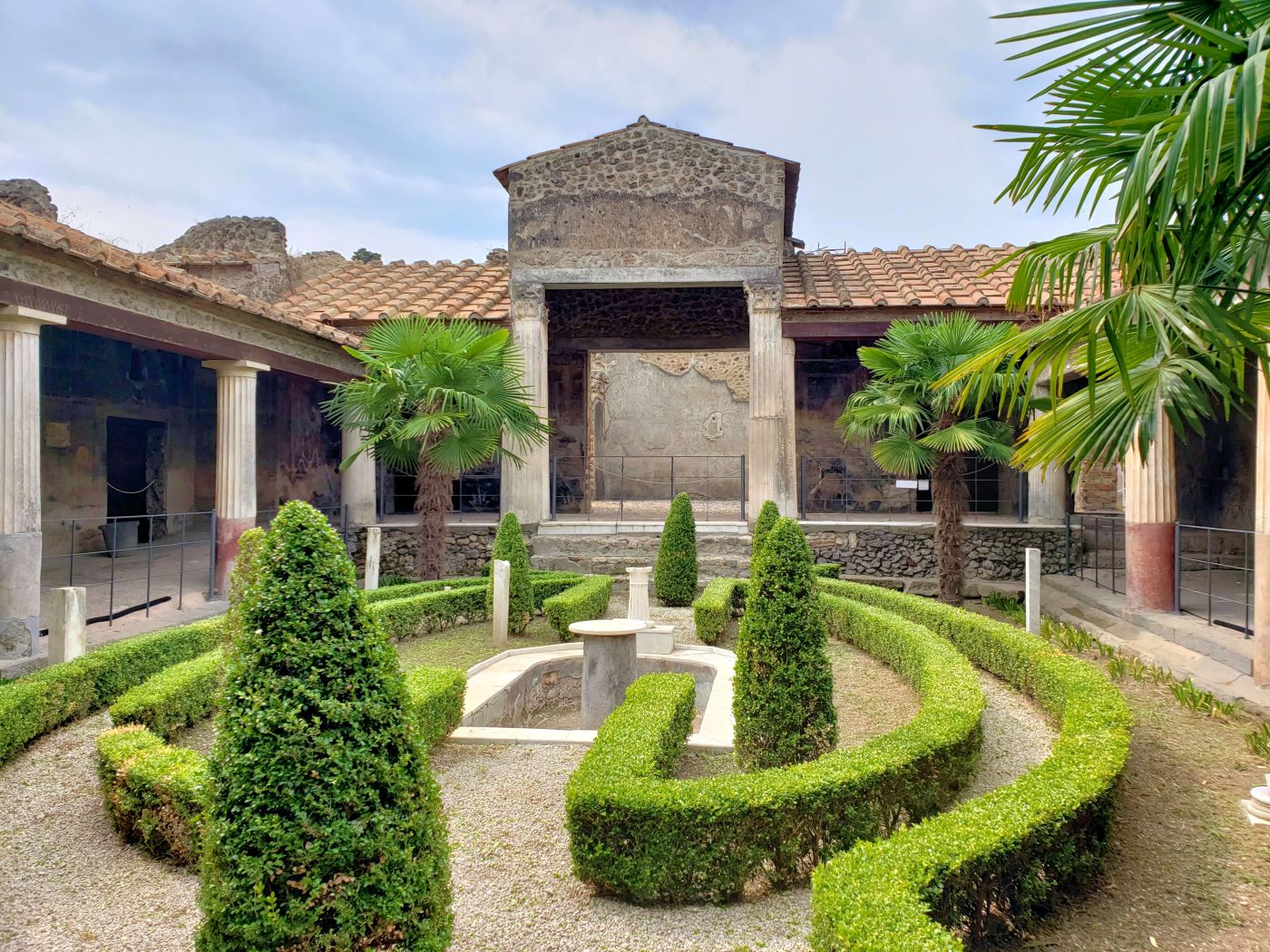
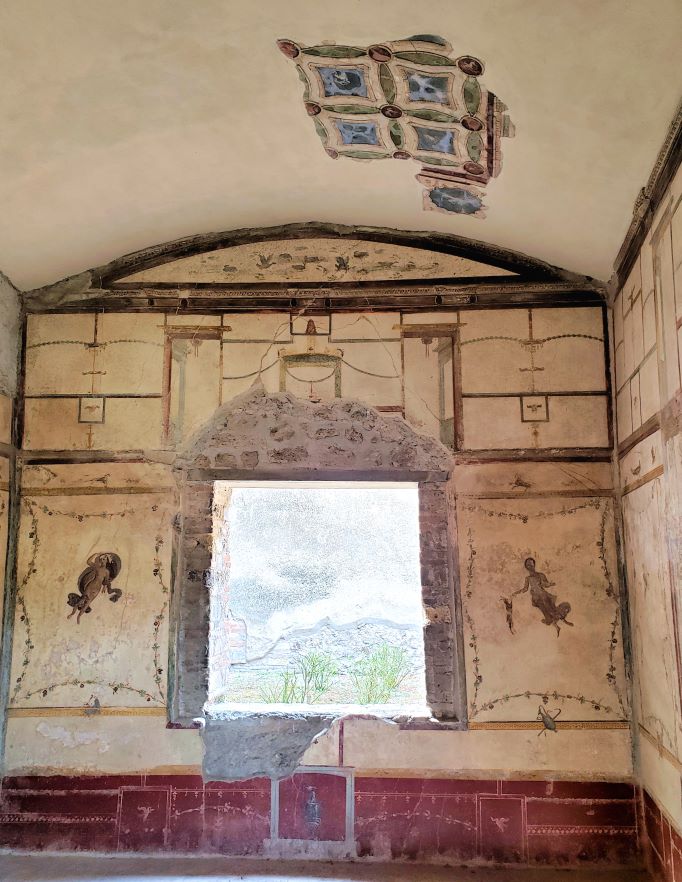
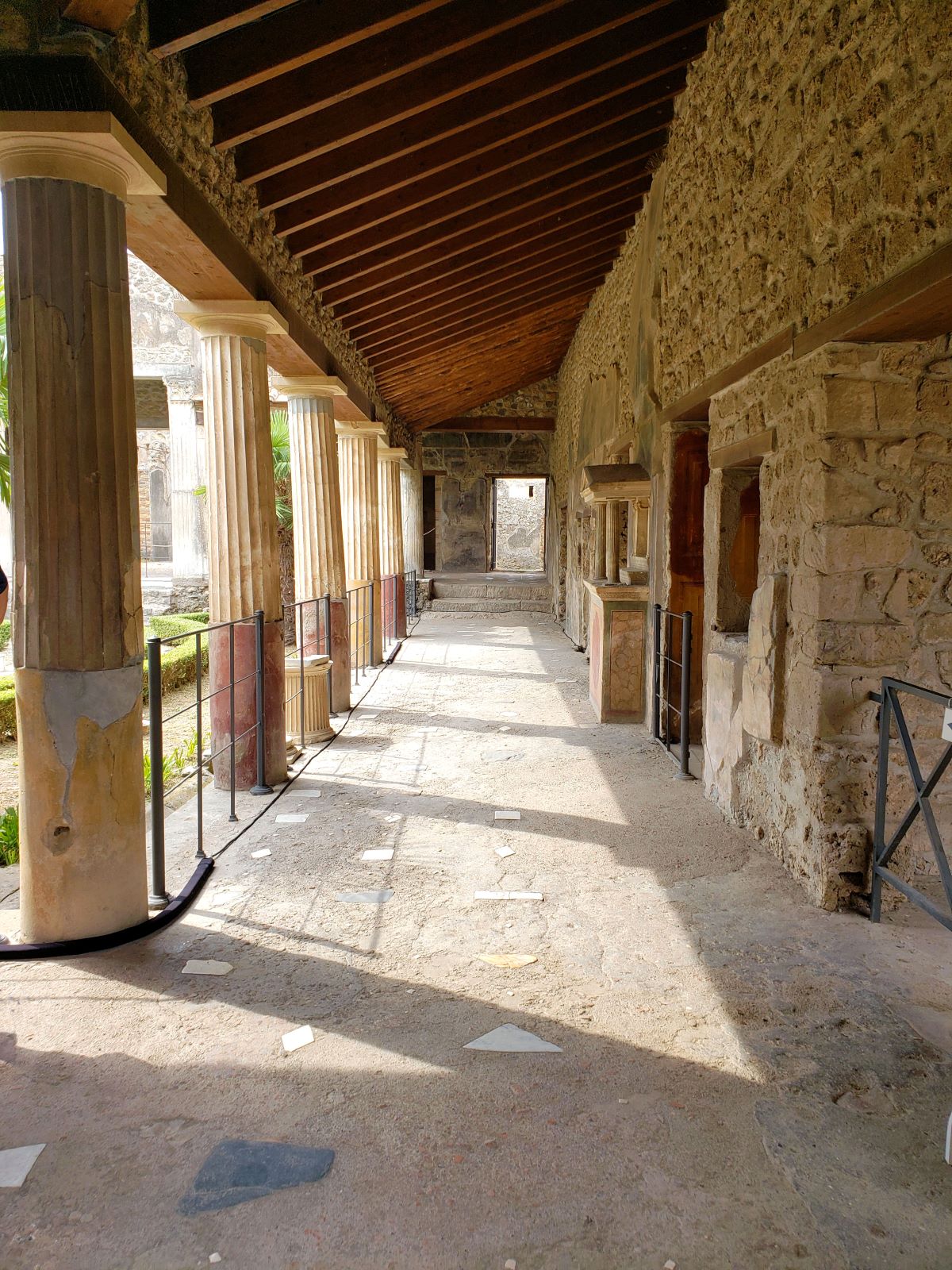

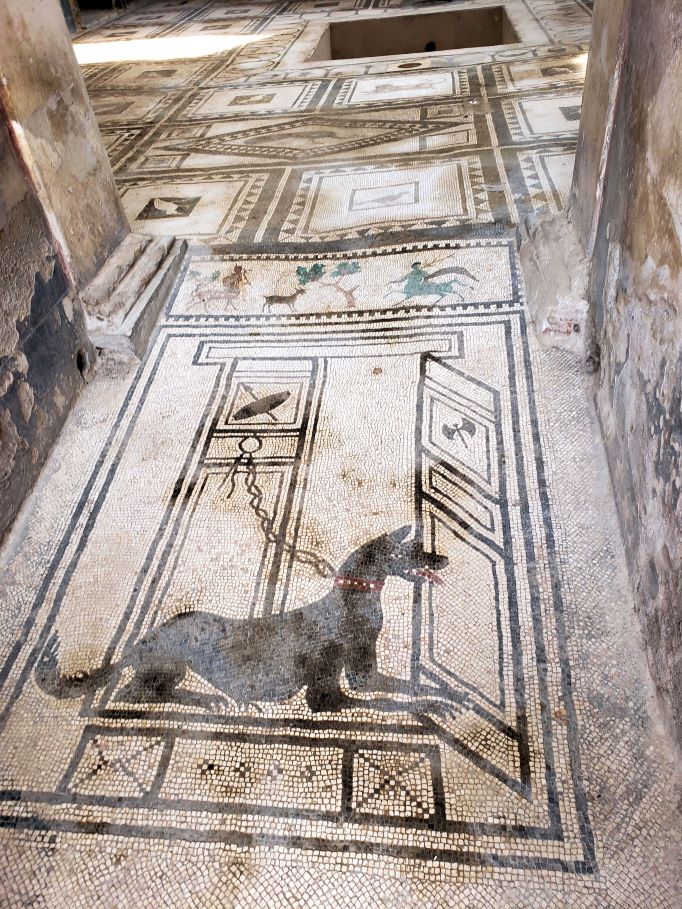




Temples:
There were several temples and sanctuaries at Pompeii dedicated to Greek and Roman deities, there was even one built for the Egyptian goddess Isis.

Located in the Triangular Forum is the so called Doric Temple attributed to Athena (aka Minerva to the Greeks). This was my favorite area and along with the Temple of Apollo and the Sanctuary of Venus it is one of the oldest areas of Pompeii. There was a Greek style temple here, the only Greek style temple found at Pompeii. This was apparently one of the first places excavated by the past Kings of Naples and not much remains aside from the Temple’s foundation hewn from large beautiful stone blocks.
